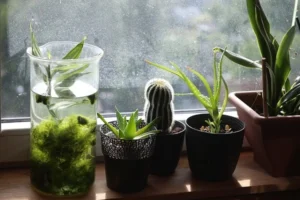Urban gardening is on the rise, and among the most popular techniques is vertical hydroponics—perfect for small apartments and tight indoor spaces. This clean, soil-free approach lets you grow fresh herbs, leafy greens, and even fruits indoors with a compact, efficient system. But there’s another revolution happening in our homes: smart automation.
Imagine your hydroponic garden reminding you when to refill the reservoir, turning on the grow lights when you’re not home, or adjusting watering based on weather reports. By merging smart home technology with your DIY vertical hydroponic setup, you can save time, reduce waste, and take your indoor gardening game to the next level.
Let’s dive into how to make your hydroponic system smarter—and your life easier.
Why Automate Your Vertical Hydroponic System?
If you’ve been hand-watering your vertical setup or checking nutrient levels manually every day, you already know the effort it takes to keep things running smoothly. Automation isn’t just a luxury—it can be a game-changer, especially in a small apartment where space, time, and attention are all premium.
Here are a few key benefits of connecting your hydroponics to a smart system:
- Consistency: Plants love routine. With automation, your system can deliver precise watering and lighting schedules, helping plants thrive without missing a beat—even if you’re busy or forgetful.
- Remote Monitoring: Heading out of town or just working late? Smart systems can notify you if something needs attention, like low water levels or temperature shifts, so you can make changes from anywhere.
- Efficiency: Automation can reduce water usage, energy waste, and even optimize nutrient delivery by timing everything just right. It also helps eliminate overwatering or excessive lighting—two common issues in manual setups.
- Tech Synergy: Integrating your garden with other smart home features (like voice assistants, routines, or environmental sensors) brings a futuristic vibe and makes you feel like a true green-tech innovator.
Smart Home Features You Can Integrate with Hydroponics
Automation doesn’t mean rebuilding your system from scratch. Many features can be added to an existing DIY vertical hydroponic system with some basic smart components and a little creativity. Let’s explore what functions are most valuable—and how to use them.
Automated Watering Schedules
A key aspect of hydroponics is the delivery of nutrient-rich water at regular intervals. By connecting your water pump to a smart plug or programmable controller, you can automate watering sessions.
Example: Set your pump to run for 5 minutes every 6 hours. You can fine-tune based on plant type and growth stage. Some systems even let you stagger watering across vertical levels to avoid flooding.
Lighting Control
Indoor plants rely on artificial lighting—especially in apartments with limited sunlight. Smart LED grow lights can be controlled remotely or programmed to mimic natural daylight patterns.
Example: Schedule full-spectrum lighting from 6 a.m. to 8 p.m. for leafy greens in the vegetative phase. Later, switch to red-heavy spectrum for flowering herbs, adjusting timing accordingly.
You can also sync lights with your daily alarm, slowly increasing brightness to simulate a sunrise—good for you and your plants!
Environmental Monitoring
With temperature, humidity, and light sensors, you can keep your indoor climate in check. Some advanced sensors even monitor pH and electrical conductivity (EC), helping you maintain nutrient balance.
Example: If the room temperature rises above 80°F (27°C), the system sends you an alert or automatically turns on a fan. If the humidity drops too low, a small humidifier kicks in.
Voice Control & App Integration
Voice assistants and mobile apps let you control your hydroponic garden with ease.
Example: Say, “Turn off the grow lights in the herb tower” before bed. Or check your phone to see if water levels are low while you’re at work. With app integration, you can adjust schedules or even trigger emergency responses (like turning off pumps if there’s a leak detected).
Components You’ll Need for Integration
You don’t need a fancy lab setup or a big budget to automate your vertical hydroponic system. A few smart, DIY-friendly components can go a long way—especially if you’re working in a small apartment. Here’s what you’ll want to consider:
Smart Plugs or Controllers
These are the easiest entry point into automation. Just plug in your water pump or grow lights, connect to your phone via an app, and set schedules for when they should turn on and off. Great for creating a reliable routine without needing any wiring or programming skills.
Wi-Fi-Enabled Water Pumps
These pumps let you control watering remotely or set intervals (like watering every 3 hours). Adjustable flow rates are helpful for different plant types, and some models even alert you if water levels are low—handy when your system is tucked in a corner or behind furniture.
Smart LED Grow Lights
Look for lights that let you control brightness and color spectrum from your phone. This way, you can tailor the light to different plant stages, and dim things down in the evening if the glow is too harsh in a small space. Energy-efficient models also help keep your electric bill in check.
Environmental Sensors
These small devices monitor things like temperature and humidity—both key for healthy plant growth. Some also measure light levels or air quality. With app alerts, you’ll know if things get too hot, dry, or humid, which is important in apartments where airflow can be limited.
Nutrient Monitoring Tools
To keep your plants thriving, you’ll want to track pH and EC (electrical conductivity) levels in your nutrient solution. There are simple Bluetooth or Wi-Fi options that show real-time readings on your phone and alert you when it’s time to make adjustments.
Home Automation Hub (Optional)
If you’re using multiple smart devices, a hub can make things easier by syncing everything in one place. It’s especially useful for setting up routines like “Morning Watering” or “Night Mode” where multiple actions happen at once. Not essential, but nice to have if you want everything working together smoothly.
TIP: Just make sure all your components use compatible protocols like Wi-Fi, Bluetooth, or Zigbee. It’ll save you a lot of frustration when you’re trying to get everything talking to each other.
Step-by-Step: Setting Up Your Smart Hydroponic System
Ready to connect your hydroponics to your smart home? Here’s a simple DIY setup plan.
Step #1. Plan Your Setup
Sketch your vertical hydroponic system. Note where components like the reservoir, pump, lights, and electronics will go. Choose a central location for the smart controller and power access.
Step #2. Install Smart Components
Connect your water pump and grow lights to smart plugs or controllers. Use waterproof cable housing or enclosures to keep electronics safe from splashes. Mount environmental sensors at canopy level for accurate readings.
Step #3. Configure Automation Rules
Set watering intervals using your controller app. Try 5–10 minutes every 4–6 hours, adjusting based on plant needs and system size.
For lighting, set a cycle based on photoperiod:
- 16 hours on / 8 hours off for vegetative growth
- 12 hours on / 12 hours off for flowering
Add light ramp-up and dim-down options if supported.
Step #4. Set Up Monitoring & Notifications
Use a smartphone app to track environmental metrics and receive alerts. Set thresholds for temperature, humidity, and water levels.
Example: “Notify me if the reservoir water drops below 30%,” or “Send an alert if pH falls outside the 5.5–6.5 range.”
Step #5. Test & Calibrate
Run the system for a few days and watch how it performs. Adjust timing and sensor thresholds based on real-world observations. Log data to optimize your routine.
Creative Automation Ideas for Apartment Dwellers
Small apartments come with big limitations—space, noise levels, and convenience all matter. Here are some smart, practical automation ideas tailored to vertical hydroponic setups in compact living spaces:
Silent Hours
When you’re winding down, the last thing you want is the hum of a water pump or grow lights glowing into the night.
Quick Tip: Use smart plugs or timers to automatically power down non-essential components between 10 p.m. and 7 a.m.
- Grow lights can switch off or dim.
- Pumps can pause unless the system really needs them (like for aeroponics).
This keeps your apartment peaceful while still supporting healthy plant growth.
Presence Detection
Make your system smart enough to know when you’re home.
How? Use a motion sensor or link your smartphone’s location with your smart system.
- When you leave, lights and pumps can switch to low-power or paused mode.
- When you return, everything resumes.
It saves energy, reduces wear on equipment, and keeps things quieter while you’re out.
Automated Feeding & Flushing
Set up a routine to handle:
- Feeding days with nutrient solution
- Flush days with plain water to prevent salt buildup
- Adjustments based on plant stage (seedling, growth, flowering)
This takes the guesswork out of maintenance. You can pre-schedule these routines weekly, bi-weekly, or monthly—no manual mixing every time.
Holiday Mode
Heading out of town? Set a “vacation” profile:
- Fewer light hours (to slow growth)
- Less frequent watering
- Optional daily system checks sent to your phone
You can even set up a webcam for peace of mind, but the goal is simple: your garden stays alive, and you stay relaxed.
Bonus: Group Routines
Bundle actions together with simple voice commands or app scenes:
- “Start garden” = turn on lights + pump
- “Wind down” = dim lights + pause pump + set system to night mode
These help your system blend naturally into your day-to-day flow—no fuss, just function.
Troubleshooting and Safety Tips
With smart tech, glitches can happen. Here’s how to stay ahead of problems:
Common Issues
- Wi-Fi Disconnection: Place your router nearby or use range extenders.
- Overwatering: Double-check your timer settings, especially after app updates.
- Sensor Drift: Calibrate sensors monthly for accurate readings.
Safety Tips
- Use waterproof electrical boxes or covers for all outlets.
- Secure vertical towers to the wall or ceiling to prevent tipping.
- Keep a manual override for pumps in case of connectivity loss.
- Back up your automation routines in the cloud or app.
Final Thoughts: The Future of Urban Gardening
Smart automation isn’t just about convenience—it’s about empowering everyday people to grow food more efficiently, sustainably, and confidently. Whether you’re nurturing a few herbs or a full salad tower, connecting your hydroponic system to your smart home tools transforms your growing experience.
Start small—maybe just a timer and a light schedule. As you grow more confident, expand into monitoring and full automation. Before you know it, your smart vertical garden might be the most advanced (and delicious) corner of your apartment.




